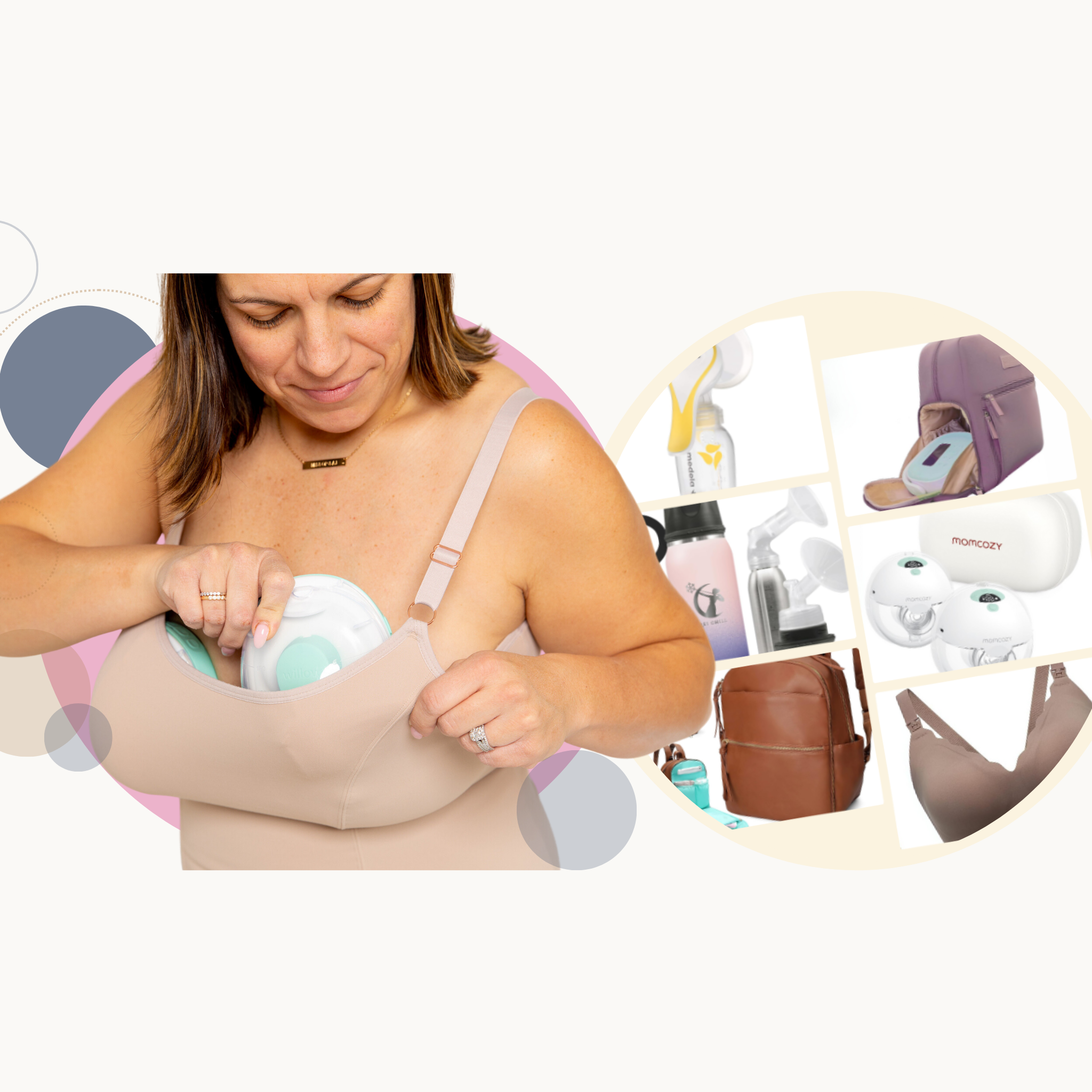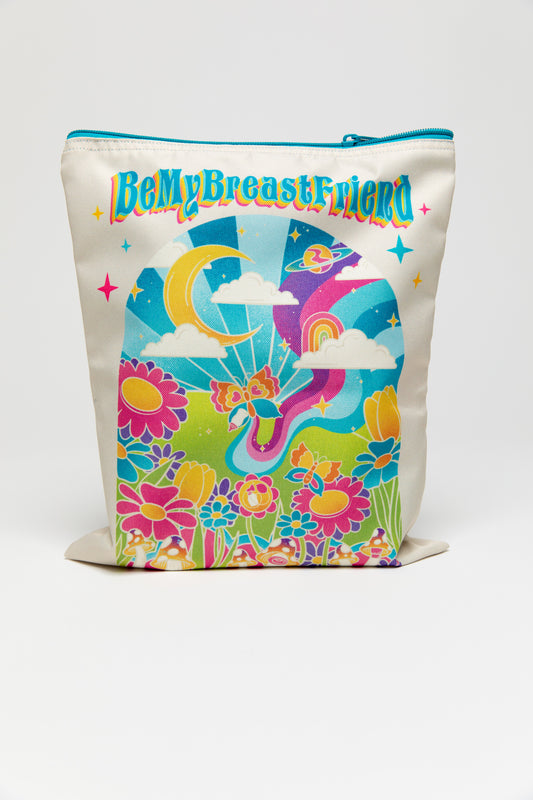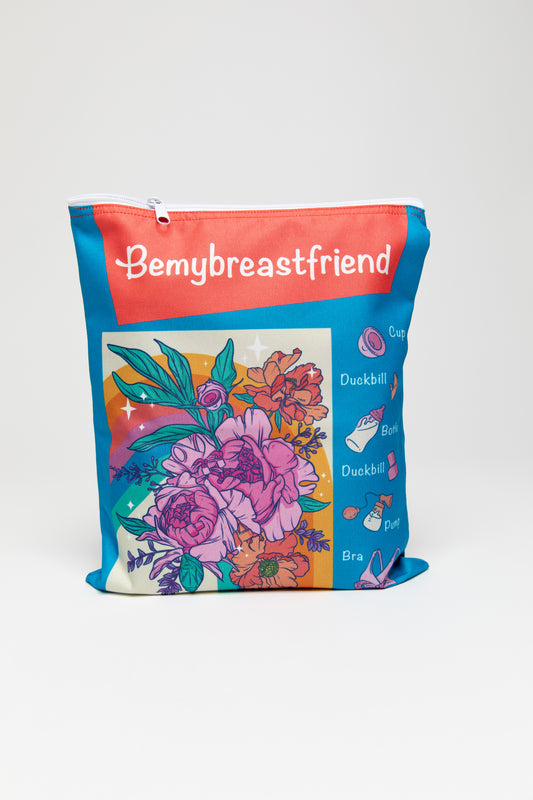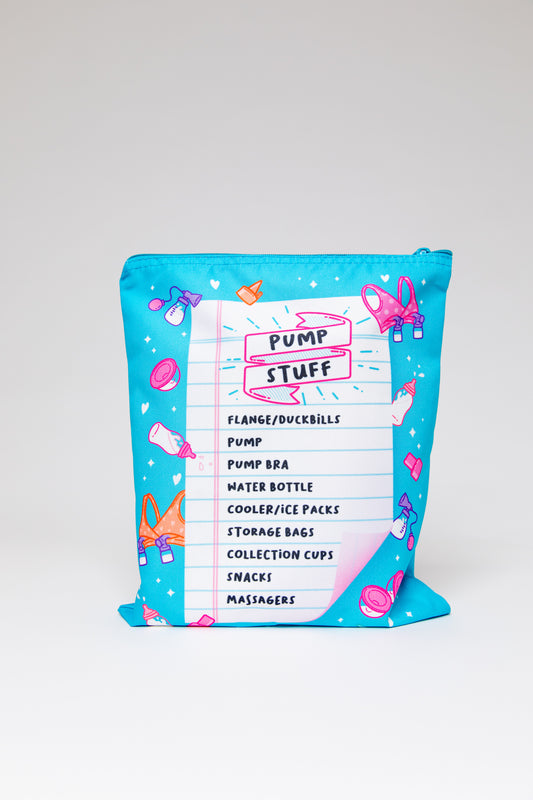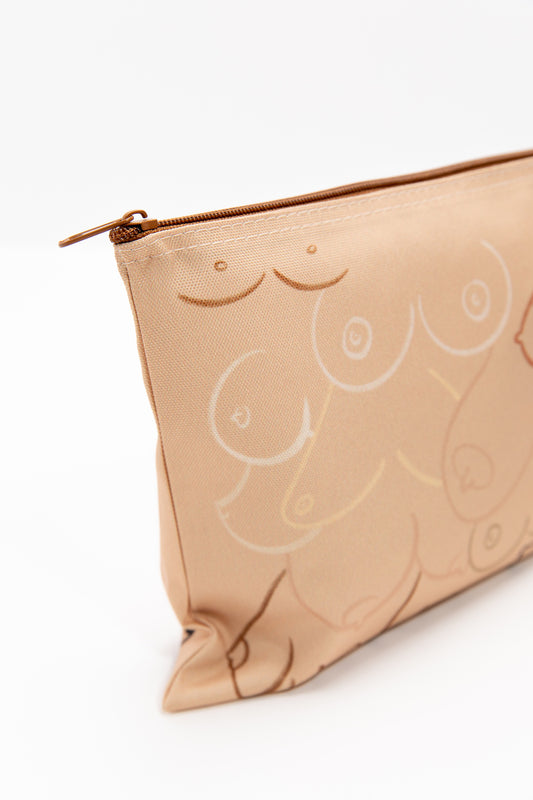
If you’re reading this, I’m guessing you’re trying to figure out how to juggle feeding at the breast and pumping without losing your mind. As a mom of five, I’ve done it all: exclusive pumping, nursing, and everything in between. With my most recent addition, I’ve been doing a combo of nursing and pumping, which has given me a unique perspective on how to make this work.
Whether you’re trying to stockpile a freezer stash, get ready to return to work from maternity leave, or just hand off a feeding session so you can breathe, I’ve got you. No one's experience is the same, but I hope some of these tips will help you find more joy in your breastfeeding journey. Let’s dive into some real talk about feeding at the breast AND pumping (a.k.a. combination feeding), tips to make your life easier, and answers to questions you probably Googled at 2 am.
Being Flexible from the Beginning
First things first: expect the unexpected. Feeding your new baby can look so many different ways, and there’s no one-size-fits-all approach. When you get to the hospital to deliver your beautiful baby, don't get your hopes up that things will work exactly as you predict. If you're planning on any sort of breastfeeding, try to pack some dual nursing and pumping bras just in case. You shouldn't have to worry about bringing a pump - the hospital will have one - but I would recommend bringing the one you have intend on using for familiarity purposes. Either way you don't want to find yourself stuck holding flanges against your breasts for an extended period of time, so be sure to grab a nursing bra that also has pumping functionality.
Seriously, throw all those Pinterest-perfect feeding plans out the window. Here are just a few scenarios that might come your way as you begin navigating feeding your new baby:
-
The Dream Baby: Latches like a pro, your milk comes in like Niagara Falls, and breastfeeding is smooth sailing. Pumping? That comes later for extra milk or freezer stash goals.
-
The Work in Progress: Baby has trouble latching (think tongue ties, flat nipples, or just questioning the process). You might start pumping sessions early to build a good milk supply while working on nursing.
-
The NICU Baby: Your little one needs some extra help in the NICU, so you’re all about the pump until baby can attempt to join the nursing game.
-
The Growing Baby: Baby isn’t gaining as expected, so you’re pumping after nursing sessions to boost your supply and have some expressed breast milk on hand for extra feedings.
Being flexible and open to a combination feeding approach is a great way to meet your baby’s needs without burning yourself out.
When A Combination Feeding Approach Comes in Handy
Once the newborn haze clears (well, somewhat), you might find yourself needing to pump and nurse for all sorts of reasons.
-
Work Life: If you’re heading back to work, a double electric breast pump will become your new BFF. We'll talk details later. Keeping a regular schedule of pumping during work hours is crucial for maintaining your milk supply so that you can then return home to nurse your baby effectively.
-
Date Nights: Because yes, you deserve one! Pump before you go, leave some expressed breast milk in a bottle, and let the babysitter handle things.
-
Public Nursing Nerves: Look, some moms rock nursing in public with no trouble at all. But if that’s not you, no shame in bringing a bottle instead! For me, when I have to bring my whole family somewhere, it's often easier for me to watch after my other kiddos if I'm bottle feeding my infant rather than nursing.
-
Help from Others: Let your partner or older kids feed the baby with a bottle so you can enjoy a hot shower or cook dinner. Your husband may find that feeding his baby with a bottle is a special bonding experience he looks forward to!
- Traveling: Have a road trip coming up? Or just spend a lot of time on the road? The car is one of the best places to get a pump session in so that you can have milk ready to go for your babe upon arrival!
Breastfeeding AND pumping gives you options, and honestly, isn’t that what every new mom needs?
Pro tip: As a mom open to combination feeding, I like to get on the pumping train as soon as baby is here, and actually even before.
Tips for Pumping and Nursing Like a Pro
If you're going to pump in addition to nursing, I have endless tips for you. Here are just a few tips for combination feeding mamas:
-
Choose the Right Pump
If you're new here, let me be the first to tell you that pumping does NOT mean you're posted up next to a wall for hours on end every day with big plastic flanges attached to your boobs. There are such wonderful pumps on the market nowadays, many of which are hospital grade and easy to bring on-the-go. I could go on and on. If you’re pumping once in a blue moon, a mobile breast pump your insurance offers will likely be good enough as your primary pump. But if you’re in this for the long haul, consider in a high quality primary pump with flanges, as well as a nice secondary pump. Wearable pumps are getting better and better each year and are great options for secondary pumps. In general double electric pumps are ideal for building and maintaining a full milk supply. Read here about how to choose your breast pump. If you're interested in my thoughts about a specific pump, you can find all of my primary pump reviews here, and secondary or mobile pump reviews here.
-
Pick Baby-Friendly Bottles
The best bottles mimic the flow and feel of breastfeeding, and no I'm not referring to "like a breast" bottle. Look for nipple shapes that have an even tapper, not straw like or "extra elastic" like a real nipple.I love these bottles. When bottle feeding a baby who is used to nursing, try holding the bottle horizontally to let baby lead the feeding. This is also known as "paced" bottle feeding.
-
Learn Proper Milk Storage
Use a Ceres Chill Bottle (SHOP use code BEMYBREASTFRIEND15) or mason jar pitcher for storage throughout the day, then freeze breast milk storage bags for good use of your hard-earned milk later on. Remember, expressed breast milk lasts up to 4 hours at room temperature, 4 days in the fridge, and 6-12 months in the freezer. Here's a storage guide magnet so you can stick it right to the fridge!
-
Get Hands-On
Incorporate gentle breast massage to maximize milk flow whether you're nursing or pumping, especially if you are feeling full. Your milk ducts will thank you, and you’ll get the most milk possible out of each session.
-
Don’t Skip the Accessories
Make sure your pump parts are the right size. Using the wrong size can hurt your milk production and your nipples. And since both nursing and pumping can cause some pain, get yourself some good products for nipple damage prevention. I should also mention that pumping provides a great opportunity to take a "break" from nursing if your nipples are really struggling. If you're experiencing cracking or bleeding, you probably need to take a look at your baby's latch. But while you're healing, pumping can be a bit more comfortable than nursing.
-
Be Flexible and Follow Your Gut
Take your pumps with you if you're headed somewhere and keep them charged at home. If a nursing session becomes frustrating or you're just feeling touched out, pumping is a great option to change things up. On the other hand, if you need some good baby snuggles, those nursing moments with skin to skin contact are some of the best!
FAQs About Breastfeeding AND Pumping
Will introducing a bottle confuse my baby?
This is a question I get fairly often. I've exclusively pumped and bottle fed from the start with multiple babies, but have also tried nursing from the start without any sort of expectations. In my experience, most nursing babies can switch seamlessly between breast and bottle. It’s all about finding what works for your little one. And if they seem picky? Experiment with different bottles, nipple flows, and environments. I know that some will say to avoid introducing a bottle for the first few weeks following birth, but I think that as long as you are responding to your baby's hunger cues and keeping track of an appropriate number of wet and dirty diapers, you're golden. Once your baby gets a bit older and begins developing preferences, that's when you'll really want to make sure that you're regularly offering both breast and bottle. If you do not offer one or the other for an extended period of time, your baby might show some rejection. Nothing that can't be overcome, but frustrating for sure! This rejection isn't "nipple confusion" it's flow preference. Finding a bottle and nipple that can match your flow closest is the ultimate fix to this issue!
What if I pump and baby wants to nurse right after?
Pumping doesn’t mean your breasts are empty. Your body starts making more milk immediately, and your baby can still nurse—though feeding them with the pumped milk might be a faster option. You can also pump on only one side if you think you may need to nurse soon after. If you have began a pumping session and notice baby starting to show signs to eat, there's no harm in stopping the pump and latching baby!
Can I pump so my partner can handle nighttime feedings?
Kind of. I know this may not be what you want to hear when you're running on one hour stretches of sleep, but, in the early days, you’ll still need to remove milk (through nursing or pumping) through the night on a regular schedule to maintain supply. But as your baby gets older, you can stretch out your nighttime feedings a bit and let someone else handle a bottle. Here's everything you need to know about pumping at night.
Side Note: My Experience with my Fifth Baby
As a mom used to providing breastmilk mostly by pumping, I have been surprised that my newest babe actually loves the boob, especially during the night, though I mostly pump and bottle feed during the day. Early on, pumping can be an option for getting a little more sleep.
HOWEVER, this doesn't mean that you can pump some extra milk before you go to bed and expect to not have to pump or nurse again until morning. You’ll want to make sure that you are removing milk from your breasts every 2 to 3 hours in order to build and maintain your supply. But, you can pump before you go to bed and have your spouse feed your baby when they wake for the first time, then resume nursing or pumping on your regular schedule. This might be helpful for sleep during the first few weeks postpartum as nursing can take up to an hour per feed, while baby may only take 10-15 minutes to drink a bottle. But, at least in my experience, when baby is a bit older, nursing for middle of the night feeds is actually faster than dealing with all the pump parts.
I recommend giving yourself lots of grace as you figure out what works. Usually by around 4-6 months, you'll start to figure out a schedule that works for you, especially when it comes to feeding your baby throughout the night when they still need it. You won't always be up for multiple hours all throughout the night.
How do I avoid a dip in milk supply or an oversupply when I’m doing both?
The key is consistency. If you decide to pump after having only nursed for a few weeks, you may notice that you don't produce enough to have a few extra bottles. Rather, you'll probably make enough for just about a bottle's worth. In a similar way, if you're pumping pretty frequently and making enough to have lots of extra milk in the freezer, then you decide to only nurse for a day, you might find yourself feeling engorged. So, in order to avoid feeling uncomfortable or struggling to have enough pumped milk on hand, stick to a regular schedule, whether it’s nursing, pumping, or a mix.
Tip for Under-suppliers: Power pumping can also help mimic a growth spurt and boost your supply if it drops.
Tip for Over-suppliers: For one or two of your pumping sessions, gradually reduce the number of minutes you are pumping. You can work toward eliminating one or multiple pumping sessions so that if you desire to mostly nurse your baby on demand, you won't feel engorged.
Conclusion
Breastfeeding AND pumping can feel like a juggling act, but it’s also a great way to give your baby the benefits of breast milk while keeping your sanity intact. The most important thing is finding a breastfeeding schedule that works for you and your baby’s needs. There's so much pressure that new moms put on themselves to master breastfeeding, but the truth is that it isn’t about perfection. We must recognize that our baby's needs constantly change, so it's okay if pumping and nursing look different for you month to month and even day to day.
If you’re feeling stuck or overwhelmed, reach out to a lactation consultant or check out support groups. And don’t forget to celebrate those small victories (like building a small freezer stash or making it through a cluster feeding session).

